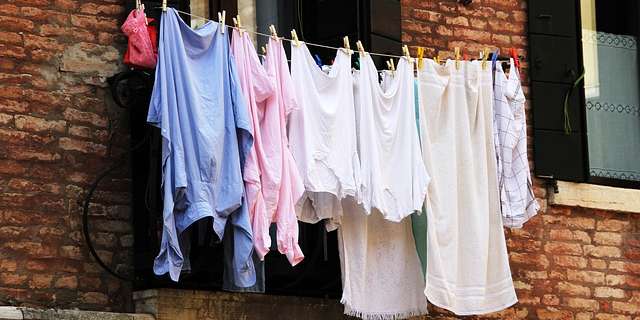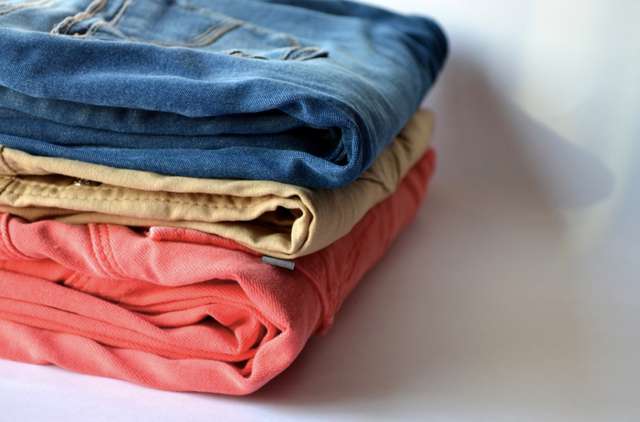
The Grey Change scale can help detect the amount of fading that occurs in different textiles after they’re washed. Image Source: Max Pixel
A homeowner decided to wash a set of red living room curtains for the very first time, carefully following the cleaning instructions listed on the label. He avoided bleach products and washed the curtains on the delicate cycle setting. But despite his diligence, the color nonetheless faded significantly after washing; his once-red curtains were now a shade of faded pink, and they no longer matched the color scheme of the living room.
This is a common challenge that textile manufacturers face, whether they’re dyeing textiles for curtains, blankets, clothing or any other colorful fabric. If a large-scale textile manufacturer fails to identify problems with fading or color bleeding in its products early on, it could lead to customer dissatisfaction later. Yet there is a solution to this problem. Using the Grey Change and Grey Stain color scales, which are included in the software packaged with some advanced spectrophotometers, textile manufacturers can identify both fading and bleeding early on in the dyeing process. These two color scales are specifically designed to analyze color fastness and dye durability, allowing manufacturers to refine their dyeing processes and invest in the most durable dyes for their products.
The Problem with Some Colorful Textile Dyes
Certain textile dyes are more prone to fading and bleeding than others and environmental factors like exposure to UV rays or frequent washing can significantly alter product color depending on the chemical makeup of the dye.1 This is why textile manufacturers must consider the color fastness of the dye being used for each product, as different types of dyes will have different benefits and downsides.
The term “color fastness” refers to a dye’s durability against fading and bleeding; a dye that has excellent color fastness will be durable and long-lasting, even when exposed to environmental factors that cause color fading or bleeding. A dye with poor color fastness won’t be as durable. For instance, one type of dye that is known for its excellent color fastness is an azoic or naphthol dye.2 These dyes produce bright, bold colors, especially in the red and orange spectrum, and are highly resistant to fading in the wash or even when exposed to bleach. Conversely, acidic dyes tend to be resistant to color fading when they’re exposed to sunlight, but they’re much more prone to fading and bleeding after washing. Here are a few more examples of common textile dyes and their typical color fastness:
- Basic: Excellent light and wash fastness.
- Disperse: Good light and wash fastness, but sensitive to nitrogen gas.
- Direct: Fair lightfastness, but very poor wash fastness.
- Reactive: Great light and wash fastness, but prone to bleeding excess dye unless it’s washed well during manufacturing.
- Mordant: Good light and wash fastness, but only available in a small range of colors.
- Premetallized: Good light and wash fastness, but only available in a small range of colors.
- Sulphur: Fair light and wash fastness.
- Vat: Excellent color and wash fastness. It’s perhaps the most durable textile dye used by manufacturers.
- Fluorescent brighteners: Fair wash fastness, but very poor lightfastness.
While this basic list of color fastness can give you a general idea of which textile dyes will be the best choice for your textile products, the list isn’t foolproof. For example, although sulphur dye is generally fairly resistant against color fading after being washed or exposed to sunlight, some manufacturers have found that certain sulphur-dyed yarns will occasionally fade after about six months of use. This is why it’s important to test your dyes for true color fastness using the Grey Change and Grey Stain scales; every dye reacts differently with each fabric you use, so by testing each new product in advance, you may produce more durable, colorful textiles.

Textile dyes vary in color fastness depending on the chemical makeup of the dye or the type of fabric that a manufacturer uses. Image Source: Shutterstock user Pichit Tongma



